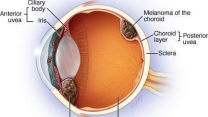
A new method to reduce the side effects of Ocular Brachytherapy
Problem to be solved
Episcleral brachytherapy is the most widely used procedure for the treatment of uveal melanoma. Although this technique preserves the eyeball. The problem of the treatment is the collateral damages to the healthy ocular tissue
Background
The present technology may involve a radical change in the evolution patients suffering from uveal melanoma. It has been designed to protect the healthy eye structures from ionizing radiation, so that adequate treatment doses may be applied with less risk and severity of side effects. This technology will increase the array of tumors capable to treat by standard brachytherapy.
Technology status
The current project is in a pre-clinical stage and it is expected to be divided in two pre-clinical phases to develop a new device in ocular brachytherapy and perform the PoC in rabbits.
Context
Episcleral brachytherapy effectively controls tumor growth and maintains patient survival rates equivalent to enucleation. The main problem of the treatment is the collateral damages that are derived from the interaction of the ionizing radiation with the rest of the healthy ocular tissue. This fact leads, in a considerable number of eyes treated, to the progressive and irreversible loss of visual acuity. The rate of radiation retinopathy at 5 years is of 30%, 18% of radiation maculopathy and 16% of radiation-induced optic neuropathy. However, although the brachytherapy allows a localized delivery of radiation to the tumor site, there is still no method to prevent radiation from spreading to surrounding healthy tissue. Currently, the only method to minimize side effects is to adjust the corresponding dose to the size of the tumor.
Technology
This technology will lead to the following advantages: 1. Decrease the necessary radiation dose for an effective treatment (because of secondary radiation coming from iron nuclei) 2. Amplifies the range of tumors treated by brachytherapy (bigger tumors could also benefit from the technique) 3. Reduces the actual number of enucleations (approximately 20% for brachytherapy contraindication).
Autors
LORENZO D (HUB), CAMINAL JM (HUB)
Technology Readiness Level
TRL 1
What are we looking for?
Licensing agreement
Codevelopment
